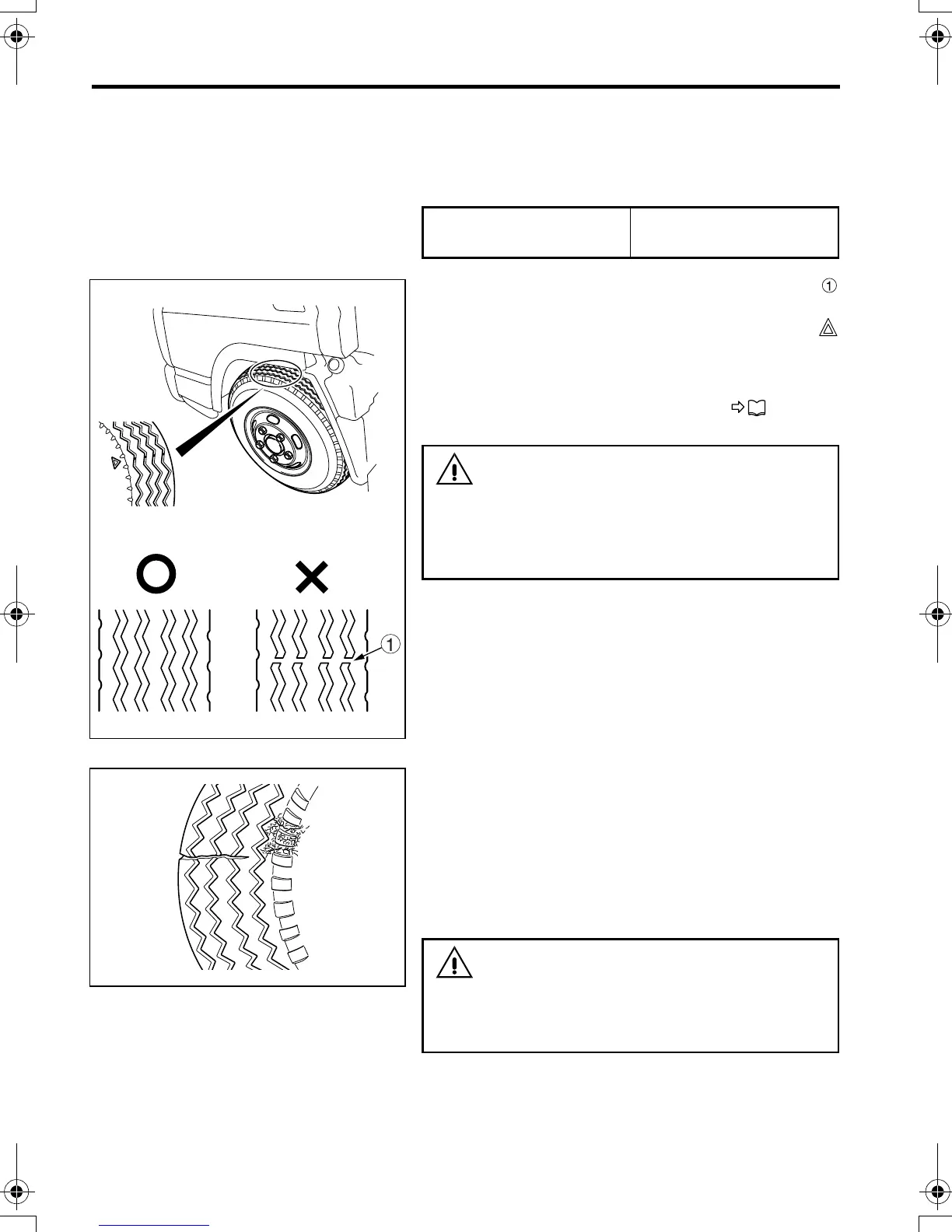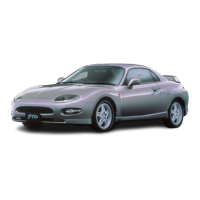12-68 Simple inspection and service
2 Checking tread depth
Check the entire circumference of each tire to make
sure that the remaining depth of the tread pattern on
the part that contacts the road surface is sufficient.
When the tread wears down, wear indicators
(interrupted sections of the grooves) appear across
the tire at the locations corresponding to the
marks.
Replace the tire as soon as the wear indicators
show up as continued use is dangerous.
P. 1 2 - 6 9
NOTE:
Hydroplaning can occur when driving on a wet
roads at high speeds. When a vehicle hydroplanes,
tires ride up on and slide over a film of water, caus-
ing the driver to lose control of both steering and
braking.
3 Checking for cracks, damage, and
objects embedded in tread
Check both the tread and the sides of each tire for
cracks, damage, and excessive or unusual wear.
Check also for metal pieces, nails, and stones that
might be embedded in the tread or caught between
the tires of dual wheels.
Tread groove depth
limit
1.6 mm (0.06 in.)
WARNING
If the remaining tread is too shallow, the tires
tend to skid and chances of “hydroplaning”
during high speed driving increase. Worn
tires should be replaced as soon as possible.
WARNING
Severely damaged or worn tires are suscepti-
ble to puncture during use and should be
replaced as soon as possible.
Z10804
Z10805
FE_FG.book Page 68 Tuesday, February 8, 2011 4:00 PM

